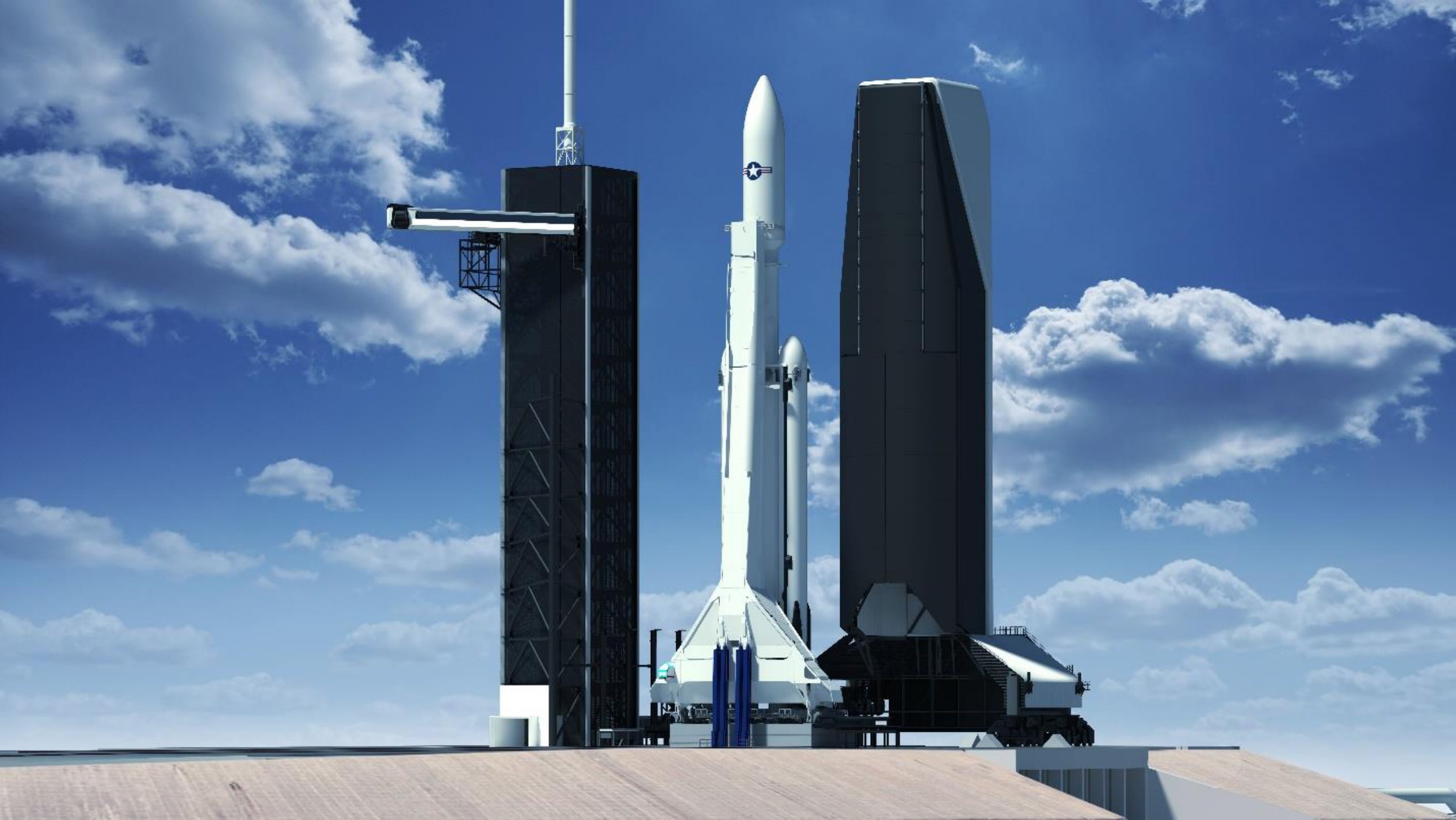
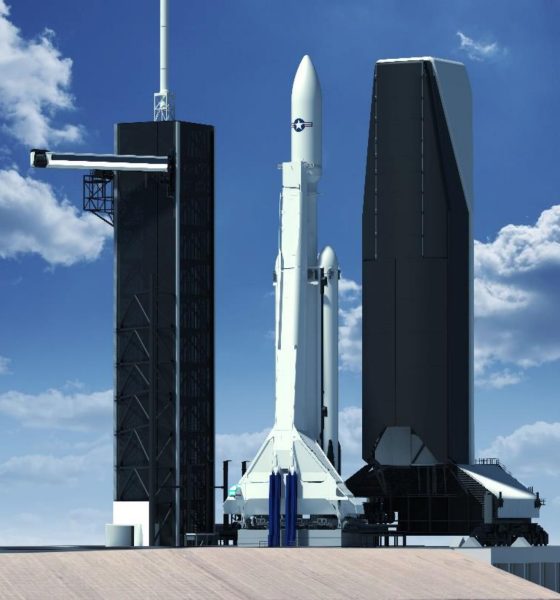
News
SpaceX envisions massive rocket enclosure for military applications
SpaceX has published the first renders of a massive tower (MST) designed to fully enclose a Falcon Heavy rocket, giving the US military access to certain prized satellite payloads even when the vehicle is vertical at the launch pad.
Stretching some 70 m (230 ft) tall and 12.2 m (40 ft) wide, building a movable tower capable of fully enclosing SpaceX’s Falcon Heavy rockets is no mean feat. Known as a mobile service tower (MST), SpaceX has managed to avoid the need for the expensive, complex, and extremely unwieldy infrastructure for the first decade of Falcon 9 and Falcon Heavy launch operations. Instead, SpaceX has designed its launch vehicles around the concept of horizontal integration, meaning that its Falcon rockets can be entirely integrated and prepared for flight before going vertical for launch. This approach has ensured easy, cheap access to the entire rocket and payload up until the last few days of static fire and launch operations, lowering the cost of launch.
Beyond Russian spaceflight operations, SpaceX, and a handful of other companies around the world, nearly all other major launch providers and space agencies – including the United Launch Alliance (ULA), Arianespace, ISRO (India), and CNSA (China) – rely almost exclusively on vertical integration. With its new Pad 39A mobile tower, SpaceX will soon join that small club, giving it the ability to compete on completely even footing with ULA and others for lucrative military launch contracts.
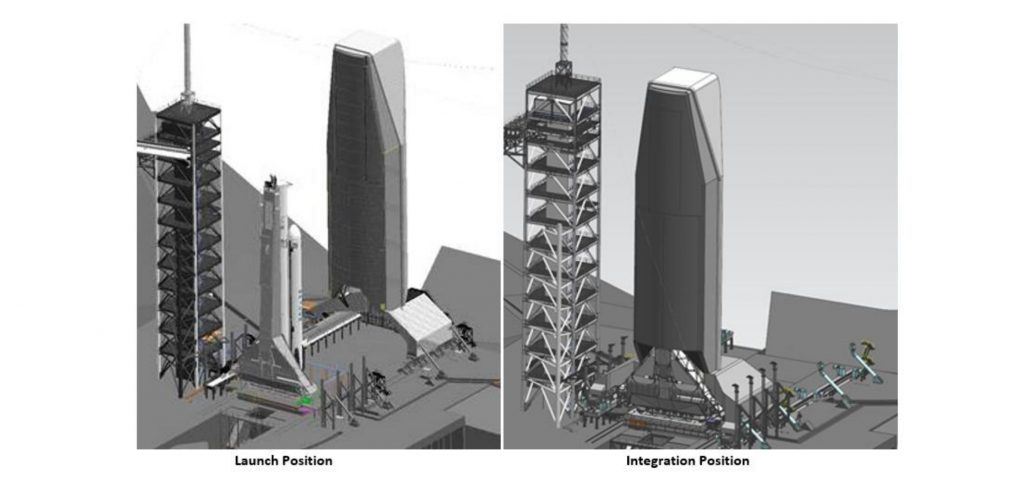
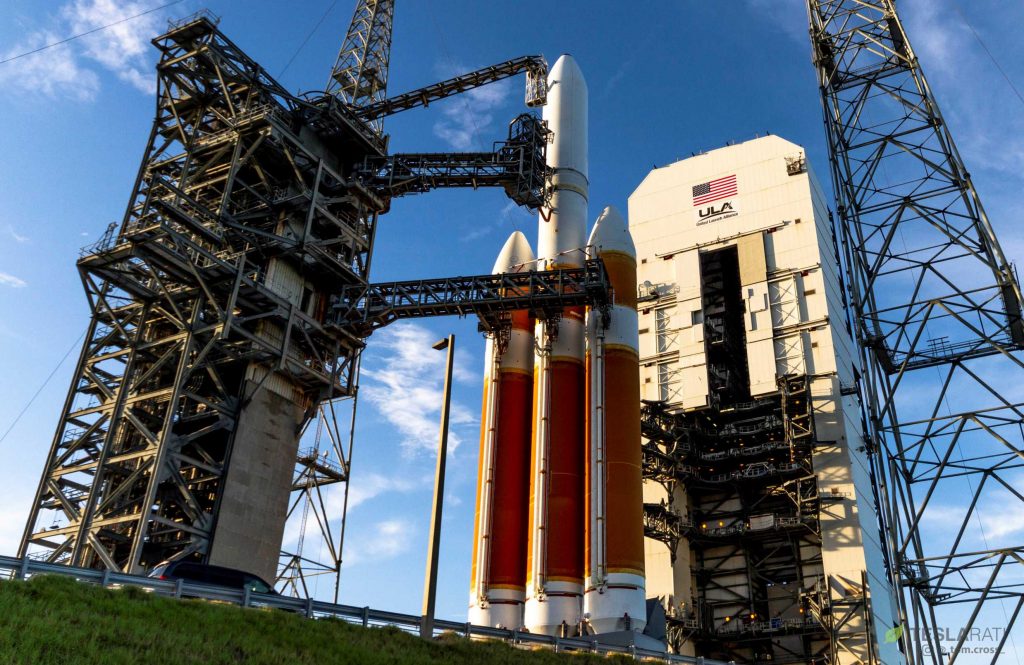
While one only has so much flexibility when designing a mobile skyscraper that needs to survive Florida’s hurricane seasons, SpaceX’s solution is still visually unique. According to the company, the mobile service tower (MST) it plans to build at its Kennedy Space Center (KSC) Launch Complex 39A (Pad 39A) facilities will measure 87m (284 ft) from its wheels to the top of its roof, while the tower’s ‘crawler’ base will be some 36m x 33m (118 ft x 108 ft) wide, a quarter of the area of a US football field.
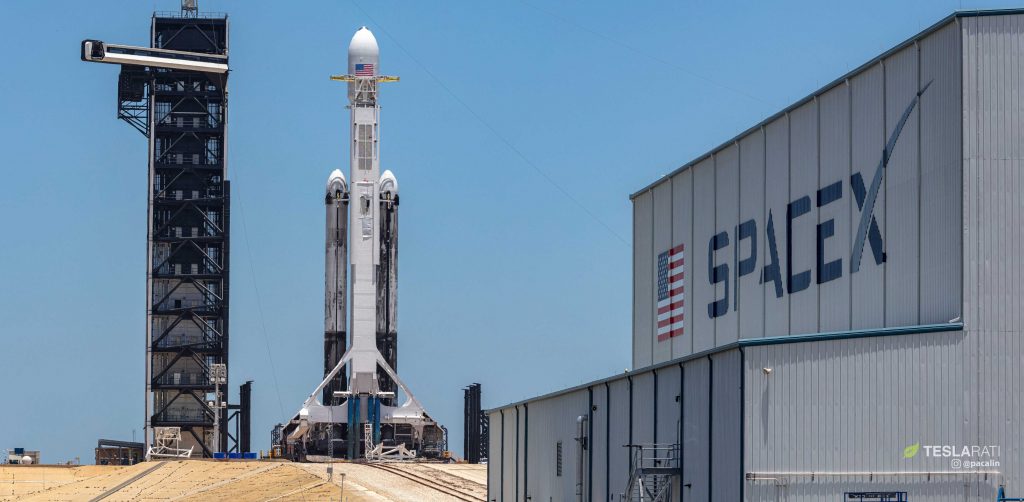
During launch preparations, SpaceX would integrate its Falcon Heavy and Falcon 9 rockets like usual, joining boosters, side boosters, upper stages, and recovery while still horizontal inside its Pad 39A hangar. The integrated rocket would be installed (still horizontal) on 39A’s transporter/erector (T/E) – the white steel structure seen backing the rocket above – and rolled out to the launch mount, where the T/E is effectively bolted into the ground before lifting the rocket vertical.
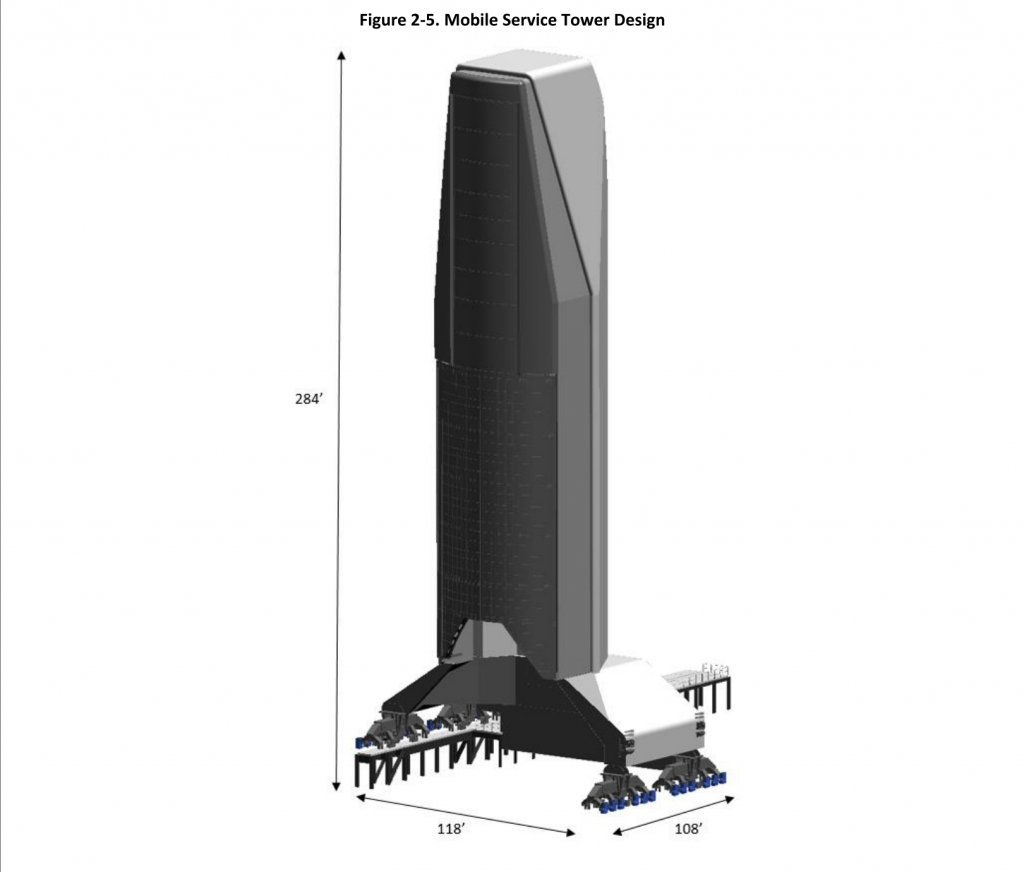
Once vertical, SpaceX’s new tower would slowly crawl about 40m (130 ft) to fully encompass a given Falcon Heavy or Falcon 9 rocket. Once safely inside the MST, 11 different levels would give SpaceX and customer technicians access to the vast majority of the rocket. Most importantly, the tower would allow SpaceX technicians to crane certain US military payloads – encapsulated inside a Falcon payload fairing – onto the top of the rocket.
At the end of the day, that’s really the only reason SpaceX needs such a tower – certain customers (the US military and, to a lesser extent, NASA) have certain payloads that they either can’t or won’t tweak to allow for horizontal integration. No schedule for the MST construction has been mentioned yet but knowing SpaceX, it’s safe to say it could be completed sooner than later once environmental impact studies are complete and construction permits have been secured.
Check out Teslarati’s Marketplace! We offer Tesla accessories, including for the Tesla Cybertruck and Tesla Model 3.

News
Swedish union rep pissed that Tesla is working around a postal blockade they started
Tesla Sweden is now using dozens of private residences as a way to obtain license plates for its vehicles.

Two years into their postal blockade, Swedish unions are outraged that Tesla is still able to provide its customers’ vehicles with valid plates through various clever workarounds.
Seko chairman Gabriella Lavecchia called it “embarrassing” that the world’s largest EV maker, owned by CEO Elon Musk, refuses to simply roll over and accept the unions’ demands.
Unions shocked Tesla won’t just roll over and surrender
The postal unions’ blockade began in November 2023 when Seko and IF Metall-linked unions stopped all mail to Tesla sites to force a collective agreement. License plates for Tesla vehicles instantly became the perfect pressure point, as noted in a Dagens Arbete report.
Tesla responded by implementing initiatives to work around the blockades. A recent investigation from Arbetet revealed that Tesla Sweden is now using dozens of private residences, including one employee’s parents’ house in Trångsund and a customer-relations staffer’s home in Vårby, as a way to obtain license plates for its vehicles.
Seko chairman Gabriella Lavecchia is not pleased that Tesla Sweden is working around the unions’ efforts yet again. “It is embarrassing that one of the world’s largest car companies, owned by one of the world’s richest people, has sunk this low,” she told the outlet. “Unfortunately, it is completely frivolous that such a large company conducts business in this way.”
Two years on and plates are still being received
The Swedish Transport Agency has confirmed Tesla is still using several different workarounds to overcome the unions’ blockades.
As noted by DA, Tesla Sweden previously used different addresses to receive its license plates. At one point, the electric vehicle maker used addresses for car care shops. Tesla Sweden reportedly used this strategy in Östermalm in Stockholm, as well as in Norrköping and Gothenburg.
Another strategy that Tesla Sweden reportedly implemented involved replacement plates being ordered by private individuals when vehicles change hands from Tesla to car buyers. There have also been cases where the police have reportedly issued temporary plates to Tesla vehicles.
News
Czech Deputy excited for Tesla FSD, hints at Transport Committee review
The ANO party lawmaker shared his thoughts about FSD in a post on social media platform X.
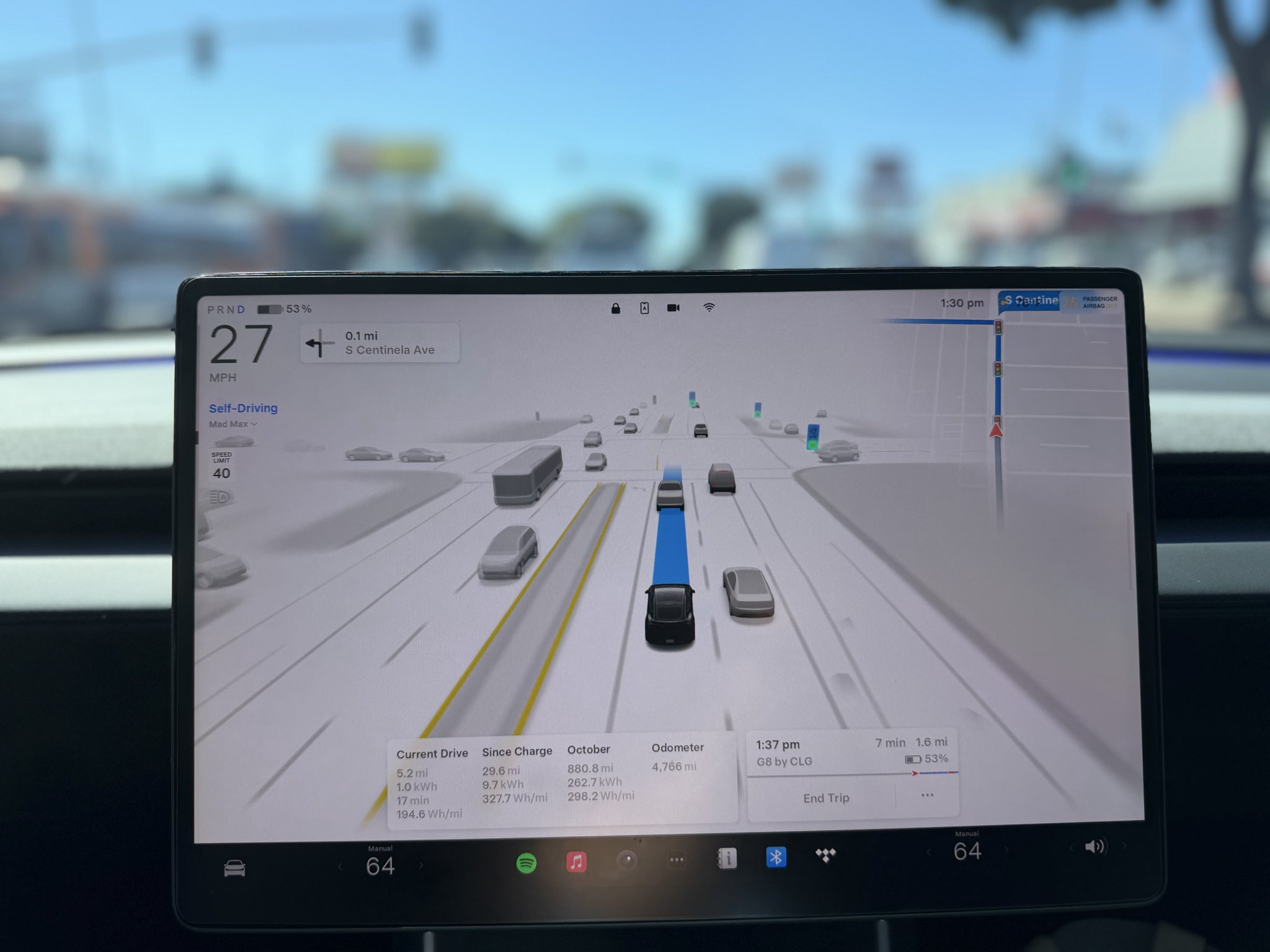
Martin Kolovratník, a Czech Republic Chamber of Deputies member, has expressed his excitement for Tesla’s Full Self-Driving (FSD) after an apparent constituent called for a quick approval for the advanced safety system.
The ANO party lawmaker, who drives both diesel and EV, shared his thoughts about the matter in a post on social media platform X.
The official’s initial statements
Kolovratník kicked off the exchange with a post outlining his coalition’s efforts to scrap highway toll exemptions for electric vehicles and plug-ins starting in 2027.
“Times have changed. Electric vehicles are no longer a fringe technology, but a full-fledged part of operations. And if someone uses the highway network, they should follow the same rules as everyone else. That’s the basis of fairness,” he wrote.
He emphasized equity over ideology, noting his personal mix of diesel and electric driving. “For this reason, there is no reason to continue favoring one technology at the expense of another… It’s not about ideology, it’s about equal conditions. That’s why we clearly agreed within the new coalition: the exemption for electric vehicles and plug-ins will end in 2027. The decision is predictable, understandable, and economically sound.”
Tesla FSD enthusiasm
The conversation pivoted to Tesla’s FSD when X user @robotinreallife, who seems to be one of the official’s constituents, replied that other matters are more important than ending highway exemptions for EVs.
“I’m happy to pay for the highway, but I have a question about a much more fundamental matter: The Netherlands will approve the operation of Tesla FSD in February 26, a technology that has been proven to reduce accidents. The Czech Republic has the option to immediately recognize this certification. Do you plan to support this step so that we don’t unnecessarily delay?” the X user asked.
Kolovratník responded promptly, sharing his own excitement for the upcoming rollout of FSD. “I know about it. I like it and it seems interesting to me. Once we set up the committees and subcommittees, we’ll open it right away in that transport one. Thanks for the tip, I’ll deliver the report,” the official noted in his reply on X.
Kolovratník’s nod to FSD hints at the system’s potentially smooth rollout to Czechia in the coming year. With the Netherlands possibly greenlighting FSD (Supervised) in early 2026, Kolovratník’s commitment could accelerate cross-border certification, boosting FSD’s foray into Europe by a notable margin.
News
Tesla Model 3 named New Zealand’s best passenger car of 2025
Tesla flipped the switch on Full Self-Driving (Supervised) in September, turning every Model 3 and Model Y into New Zealand’s most advanced production car overnight.

The refreshed Tesla Model 3 has won the DRIVEN Car Guide AA Insurance NZ Car of the Year 2025 award in the Passenger Car category, beating all traditional and electric rivals.
Judges praised the all-electric sedan’s driving dynamics, value-packed EV tech, and the game-changing addition of Full Self-Driving (Supervised) that went live in New Zealand this September.
Why the Model 3 clinched the crown
DRIVEN admitted they were late to the “Highland” party because the updated sedan arrived in New Zealand as a 2024 model, just before the new Model Y stole the headlines. Yet two things forced a re-evaluation this year.
First, experiencing the new Model Y reminded testers how many big upgrades originated in the Model 3, such as the smoother ride, quieter cabin, ventilated seats, rear touchscreen, and stalk-less minimalist interior. Second, and far more importantly, Tesla flipped the switch on Full Self-Driving (Supervised) in September, turning every Model 3 and Model Y into New Zealand’s most advanced production car overnight.
FSD changes everything for Kiwi buyers
The publication called the entry-level rear-wheel-drive version “good to drive and represents a lot of EV technology for the money,” but highlighted that FSD elevates it into another league. “Make no mistake, despite the ‘Supervised’ bit in the name that requires you to remain ready to take control, it’s autonomous and very capable in some surprisingly tricky scenarios,” the review stated.
At NZ$11,400, FSD is far from cheap, but Tesla also offers FSD (Supervised) on a $159 monthly subscription, making the tech accessible without the full upfront investment. That’s a game-changer, as it allows users to access the company’s most advanced system without forking over a huge amount of money.









